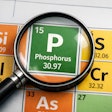As noted in last month's column, the Association of American Feed Control Officials (AAFCO) Pet Food Committee accepted (with minor revision) the expert panel's recommendations to update the AAFCO Dog and Cat Food Nutrient Profiles. While this information has yet to be published, it is anticipated that these changes will be finalized and appear in the 2014 Official Publication as the new standard for nutritional adequacy substantiation for complete and balanced petfoods in the US (presumably with a recommended grace period for compliance). The European Pet Food Industry Federation (FEDIAF) also revised its Nutritional Guidelines for Complete and Complementary Pet Food for Dogs and Cats in July 2012. Both organizations reportedly relied in part on recommendations from the National Research Council's (NRC) Nutrient Requirements of Dogs and Cats, published in 2006. Yet, the three documents deviate in their stated nutrient values, sometimes to very significant degrees. Why? Where do they differ; who should the petfood manufacturer follow?
The three organizations  do not make comparison between their respective documents easy. For one, the orders of nutrients in the tables vary, so glancing across the three documents simultaneously can get confusing. Also, even though all documents have in common one table which expresses nutrient requirements in terms of units per 1000 kcal ME, the units can be different. For example, NRC reports requirements for vitamins A, D and E in RE (retinol equivalents), µg and mg, respectively, so conversion of those units is needed to compare with the IU units used for these vitamins by both AAFCO and FEDIAF.
Another point of confusion is that the life stage designations are different. While AAFCO and FEDIAF have designations for "growth and reproduction" or "early growth and reproduction" intended to effectively cover "all life stages" as used in a label statement, NRC separates out growth requirements from those for gestation and lactation, and in fact further breaks out some nutrient values depending on age of the puppy and gestation vs. lactation in cats. Â
Finally, NRC expresses nutrient requirements three ways: either as the minimal requirement, adequate intake or recommended allowance. The NRC recommended allowance values are intended to take practical considerations of formulation and ingredients into account; hence are most appropriate for use in comparison with AAFCO and FEDIAF values.
When everything is expressed  on a common basis (units per 1000 kcal ME), a number of values are the same across the board, suggesting that the NRC recommendations were largely the basis for how the other two derived their numbers. Others are reasonably close between the three, with the discrepancies likely due to differences in how the value was calculated (e.g., converting from dry matter concentration to a per-calorie basis and subsequent rounding introduces some deviations). Where there are larger discrepancies, some of that may be due to how the NRC tables were interpreted by the other organizations.Â
Sometimes the highest NRC recommended allowance (i.e., that suitable for all life stages) for a nutrient is in the growth table, while other times it's in the table for gestation/lactation. For example, the NRC recommended allowance for leucine in lactating bitches is 5.00 g/1000 kcal, but both AAFCO and FEDIAF set it at 3.23, essentially the same as the recommended allowance for young puppies by NRC. AAFCO does explain its rationale for using the lower number in its documentation.
Other discrepancies are harder to explain. NRC sets the recommended allowance for protein for maintenance of adult dogs much lower than the other two. On the other hand, the conditional requirement for vitamin K in cat foods is ten times higher in the NRC tables than either AAFCO or FEDIAF (NRC expresses the requirement in terms of menadione, where the other two do not specify). Despite these and many other differences, there is no discernible pattern to suggest that any one organization is intentionally or unintentionally manipulating the data. Sometimes NRC recommends the highest value, sometimes AAFCO, sometimes FEDIAF. Experts can disagree!
So, whose guidance  should the petfood manufacturer follow? Obviously, products sold as "complete and balanced" in the US must follow the AAFCO Nutrient Profiles unless the product is otherwise substantiated by feeding trials or by meeting "product family" criteria. Products sold in both the US and European countries need to consider both AAFCO and FEDIAF. There is no expressed mandate for commercial petfoods to meet NRC. In my opinion, though, it appears most prudent for products to meet all three sets of values simultaneously; i.e., to be formulated to meet the highest minimum value (and lowest maximum value where one exists) among the three for each nutrient. Â
Beyond regulatory considerations, this tack represents a consensus among experts worldwide that a diet is suitable as the sole source of nutrition for the intended life stage(s), hence offering the purchaser optimum assurance that the product will meet the nutritional needs of their dog or cat. In fact, while products that are substantiated by feeding trials or meet product family criteria are allowed to deviate from the AAFCO Nutrient Profiles, I would further recommend that unless there is an extremely good reason not to do so, products substantiated for nutritional adequacy by these other means should also be formulated to meet AAFCO, FEDIAF and NRC recommendations. Â


















